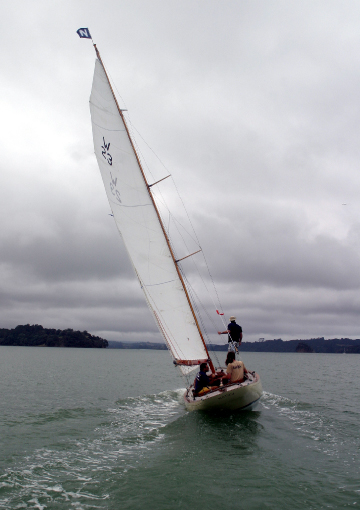Marvelous place to stop the motorway

Mahurangi Sounds: If local scuttlebutt is on the money, such scenes of tranquillity upriver could be shared with a decade of construction dust and diesel, followed by the perpetual hum of motorway traffic. photographer Max Cumming 2006
It may be a case of joining the wrong dots.
Or even a case of joining dots that aren’t there. But the spectre of a motorway snaking up Mahurangi Harbour, to the east of Schedewys Hill, Windy Ridge and Pōhuehue, is threatening to swamp reaction to the potential loss of access at Pūhoi.
In a small place it is hard to keep anything secret for long, even for a NZ Transport Agency legendary for playing its cards close to its chest.
If it transpires that the route is via the Mahurangi’s Pukapuka Inlet, it will not just be the locals the transport agency has to contend with, but the public opinion of an entire region.
The Mahurangi is highly valued by Aucklanders as a bolthole a million miles from the metropolis. The region’s sailors, in particular, prize that their first harbour north is a landscape of outstanding natural beauty. Once known only to a relatively small group of such adherents, the Mahurangi regional parks have introduced an audience of hundreds of thousands.
Beyond the region, there is growing awareness that motorway construction generates commuter traffic like there’s no tomorrow worth saving from the worst ravages of anthropogenic global warming.
Support for Dr Lockwood Smith’s pork barrel economic recovery windfall will likely wither away in the face of a failure to substantiate the supposed economic case for a $2.3 billion commuter and holiday road, and a well-organised ‘Save the Mahurangi’ campaign. Northlanders are likely to be more impressed with Northland infrastructure, particularly to benefit their tourist industry, rather than the promise that an Auckland commuter motorway somehow has their best economic interests at heart.
Dr Smith’s boast that proposed motorway is a National government priority, and his gung-ho call for the agency to shave three years off its construction time, may sound somewhat solitary when the project fails fire the passions of the general electorate. Dr Smith mightn’t lose his seat, but may well lose key support for his baby.
As for voters in the local government elections, the best bet for those wanting to retain their access at Pūhoi is to vote for Christine Rose and her continued opposition to extending the motorway northward.
Pro-motorway candidates, on the other hand, may prove powerless to deliver on promises to pro-access voters.
Stood on the Mahurangi West scenic ridge road on a relatively still night, traffic on the highway can be clearly heard. With a Mahurangi motorway route, that would be the constant soundtrack for some parts of the harbour—the sense of Mahurangi being a million miles from the metropolis lost forever.
Most who are fighting to retain access to the motorway at Pūhoi will also fight protect Mahurangi West from the development pressure such access generates. The apparent contradiction is largely explained by decade and a half expectation that the Albany–Pūhoi motorway was inevitable. Many have made pivotal decisions around that access.
Calls, meantime, for better planning protection for Mahurangi West went unheeded by district council planners, bogged down in the failure otherwise known as Rodney District Plan 2000—the belated plan is pre the science on Mahurangi’s elevated sediment accumulation rate, amongst other more profound deficiencies. The result is a loss of rural look and feel of the scenic ridge road far beyond the actual number of residential sites developed. The impact would have been far greater, if not for the global economic downturn.
Were it routed through the Mahurangi catchment at Pōhuehue, that would have been a sufficient rallying point to challenge the notion of a motorway being perpetually extended northward. But by entering the catchment at the Pukapuka, the much-loved Mahurangi provides a rallying point with the potential to challenge the transport agency’s tenuous grasp on reality, and force it start building the infrastructure urgently needed for the future.
And rather than the proposed $2.3 billion sledge hammer, the few bottlenecks and black spots could be cracked in years rather than decades at a cost not much more than consultants are set to cream off the top of the proposed project.
Mahurangi can help the agency reconnect with its mission:
It’s all about building a better transport system for New Zealanders.
Mahurangi: Marvelous place to stop the motorway, and start something sensible.
